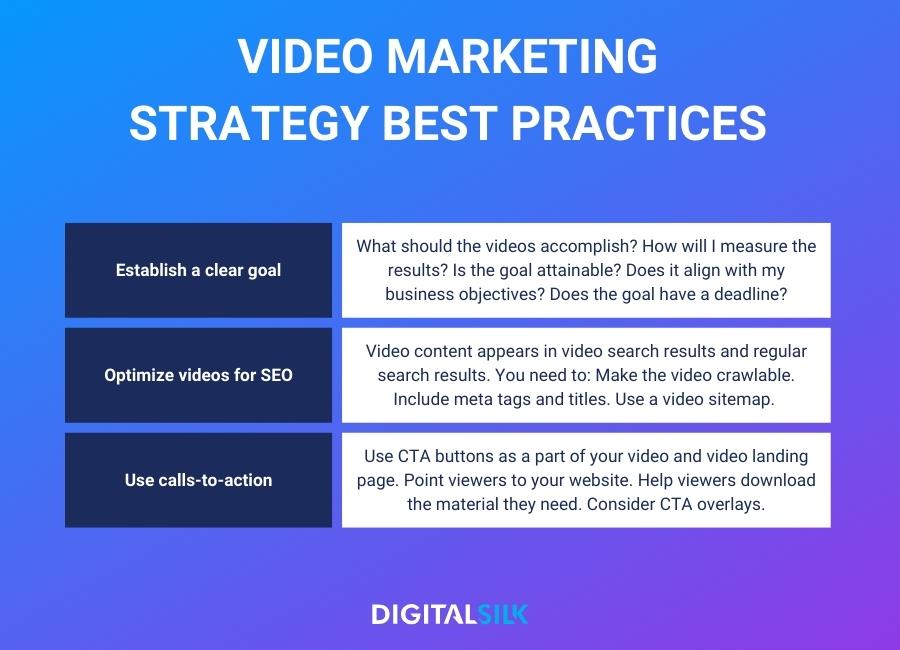Transform your written content into engaging videos with these expert strategies to capture the attention of a whole new audience.

Image courtesy of via DALL-E 3
Table of Contents
Welcome, readers! Today, we are going to explore an exciting topic that involves turning written articles into captivating videos to reach new audiences. Have you ever thought about how your favorite articles could come to life on screen? Well, that’s exactly what we’ll be diving into in this article. Let’s discover the magic of transforming words into visuals and how it can help you connect with a wider audience.
Why Turn Articles into Videos?
Imagine scrolling through your social media feed and coming across a video that explains a concept you find fascinating. Videos have a unique way of grabbing your attention and keeping you engaged. By converting articles into videos, creators can reach more people and make their content more engaging. So, if you’ve ever wondered why videos are so popular online, stay tuned to find out more!
Understanding Your Audience
When creating videos from your articles, it’s essential to understand who your viewers are and what they are interested in. This knowledge will help you tailor your video content to engage and resonate with your target audience.
Researching Your Viewers
To better understand your audience, take the time to read comments on your articles and social media posts. Pay attention to the questions and feedback they provide. Conducting surveys can also provide valuable insights into your viewers’ preferences and interests.
Creating Audience Personas
One effective way to understand your audience is by creating audience personas. These are fictional profiles representing your ideal viewers, including their demographics, interests, and behaviors. By identifying different audience segments, you can tailor your video content to cater to their specific needs and preferences.
Planning Your Video Content
When it comes to creating engaging videos from your written articles, proper planning is key. To ensure your video content effectively conveys your message and captures the attention of your audience, you need to carefully consider the visual and narrative aspects of the video. Here’s how you can plan your video content to seamlessly transform your articles into captivating videos.
Start with a Storyboard
A storyboard is a visual representation of how each scene in your video will unfold. It helps you map out the sequence of shots, transitions, and visual elements before you start filming. By creating a storyboard, you can ensure that your video follows a cohesive narrative and visually engages your viewers.
Writing a Script
Once you have your storyboard in place, it’s time to convert the written content of your article into a script for your video. Your script should outline the dialogue, narration, and key points that need to be communicated in the video. Make sure to keep your script concise, engaging, and aligned with the overall message of your article.
Tools for Creating Videos
When it comes to turning your articles into engaging videos, having the right tools can make a huge difference. Let’s explore some essential tools and software you’ll need to create professional-looking videos.

Image courtesy of aws.amazon.com via Google Images
Video Creation Software
One of the key tools you’ll need is video creation software. Popular options like iMovie for Mac users or Windows Movie Maker for PC users offer user-friendly interfaces and essential features for editing videos. These tools allow you to piece together your video clips, add transitions, insert text overlays, and even incorporate music or voiceovers.
Editing Tools
In addition to video creation software, you may also want to consider using simple editing tools to enhance your videos further. Programs like Adobe Premiere Rush or Filmora offer a range of editing features, such as color correction, special effects, and audio adjustments. These tools can help you polish your video and make it more engaging for your audience.
Recording Your Video
When it comes to turning your articles into engaging videos, recording plays a crucial role in bringing your content to life. In this section, we will guide you on how to record your video effectively and create a visually appealing and captivating final product.
Choosing the Right Equipment
Before you start recording, it’s essential to choose the right equipment to ensure your video is of high quality. Invest in a good camera that can capture clear visuals and a microphone that can record crisp audio. A high-definition webcam or a digital camera with video recording capabilities can be great options for filming. As for audio, a quality microphone can significantly improve the sound quality of your video.
Setting Up Your Recording Space
Creating a suitable recording environment is equally important as having the right equipment. Choose a quiet and well-lit space for recording to avoid background noise distractions and ensure good visibility. Make sure the lighting is sufficient but not too harsh, and consider using a clean and uncluttered background that complements your content. A well-planned recording space can make a significant difference in the overall quality of your video.
Editing and Enhancing Your Video
Once you have recorded your video, the next step is to edit and enhance it to make it look polished and engaging. Editing is where you can add effects, transitions, music, and voiceovers to elevate the quality of your video.

Image courtesy of flippingbook.com via Google Images
Adding Effects and Transitions
Effects and transitions are essential tools that can make your video look more professional and captivating. Effects like filters, color corrections, and overlays can enhance the visual appeal of your video. Transitions, on the other hand, help in smoothing out the cuts between different scenes or shots, creating a seamless viewing experience.
When adding effects and transitions, remember not to go overboard. It’s important to use them tastefully and in moderation to avoid distracting your viewers from the main content of the video.
Incorporating Music and Voiceovers
Background music and voiceovers can significantly enhance the overall impact of your video. They can set the mood, evoke emotions, and keep your viewers engaged throughout the video. When adding music, make sure it complements the tone and message of your content.
For voiceovers, choose a clear and expressive voice that matches the style of your video. Whether you’re narrating certain parts of the content or providing additional information, voiceovers can add depth and clarity to your video.
Remember to balance the audio levels of your music and voiceovers with the main video footage to ensure clarity and coherence in your final edit.
Sharing Your Video
After creating a fantastic video, it’s time to share it with the world! Sharing your video on platforms like YouTube and social media can help reach a wider audience and attract more viewers.
Uploading to YouTube
Once your video is ready, the first step is to upload it to YouTube. YouTube is a popular platform for sharing videos and reaching a large audience. To upload your video, log in to your YouTube account, click on the “Upload” button, select your video file, add a title, description, tags, and choose a thumbnail. Make sure to set the video privacy settings and click “Publish” to make your video live.
Promoting on Social Media
Sharing your video on social media platforms like Facebook, Twitter, and Instagram can further increase its visibility. You can post a teaser or snippet of your video with a catchy caption to entice followers to watch the full video on YouTube. Engage with your audience by responding to comments and sharing behind-the-scenes stories about the video creation process.
Tracking Your Video Performance
After you’ve created and shared your video, it’s essential to track how well it’s performing. This will help you understand what resonates with your audience and how you can improve your future content. Let’s dive into how you can analyze your video’s performance and gather valuable feedback.

Image courtesy of www.digitalsilk.com via Google Images
Understanding Video Analytics
Video analytics provide you with insights into how your video is performing. You can track metrics like view count, watch time, engagement rate, and audience demographics. By analyzing this data, you can see what content is popular among your viewers and make informed decisions for your next video.
Gathering and Using Feedback
Feedback from your viewers is invaluable in improving your video content. Encourage your audience to leave comments, likes, and shares, as this engagement can offer you valuable insights. Pay attention to both positive feedback and constructive criticism, and use it to refine your future videos.
Conclusion
Turning your articles into engaging videos is a powerful strategy to reach new audiences and make your content more exciting. By following the steps outlined in this article, you can effectively convert written content into visually appealing videos that captivate viewers. With the right planning, tools, and strategies, you can create compelling video content that resonates with your audience.
Final Recap
In this article, we covered the importance of converting articles into videos to reach new audiences. We discussed understanding your audience, planning your video content, utilizing tools for video creation, recording and editing your video, sharing it on various platforms, and tracking its performance. By implementing these steps, you can effectively turn your articles into engaging videos that attract more viewers.
Encouragement to Start
Now that you have the knowledge and tools necessary to create captivating videos, it’s time to put your skills to the test. Don’t be afraid to experiment and try new things. Start converting your articles into videos today and watch as your content reaches new heights of engagement and success. Remember, the key to creating engaging content lies in your creativity and passion for storytelling. So, go ahead, start creating, and inspire your audience with your video creations!
Want to turn these SEO insights into real results? Seorocket is an all-in-one AI SEO solution that uses the power of AI to analyze your competition and craft high-ranking content.
Seorocket offers a suite of powerful tools, including a Keyword Researcher to find the most profitable keywords, an AI Writer to generate unique and Google-friendly content, and an Automatic Publisher to schedule and publish your content directly to your website. Plus, you’ll get real-time performance tracking so you can see exactly what’s working and make adjustments as needed.
Stop just reading about SEO – take action with Seorocket and skyrocket your search rankings today. Sign up for a free trial and see the difference Seorocket can make for your website!
Frequently Asked Questions (FAQs)
What Equipment Do I Need?
To create engaging videos from articles, you’ll need some basic equipment. A good quality camera is essential to ensure clear visuals. You don’t need the most expensive camera out there; a decent DSLR or even a smartphone with a high-resolution camera can do the trick. Additionally, a microphone is crucial for capturing clear audio. A lavalier microphone or a shotgun microphone can help improve sound quality and make your videos more professional.
How Long Should My Videos Be?
The ideal video length can vary depending on the platform you are using. However, a general guideline is to keep your videos concise and engaging. For platforms like YouTube, videos between 7-15 minutes tend to perform well. On social media platforms like Instagram or Facebook, shorter videos of around 1-2 minutes often receive more engagement. It’s important to keep your content interesting and to the point to retain viewers’ attention.
How Do I Engage My Audience?
To keep your audience engaged, you can make your videos interactive and interesting. You can include elements like polls, quizzes, or interactive elements that prompt viewers to participate. Asking questions throughout the video and encouraging viewers to comment or share their thoughts can also help create a sense of community. Additionally, using visuals, music, and engaging storytelling can captivate your audience and make them more likely to watch until the end.







